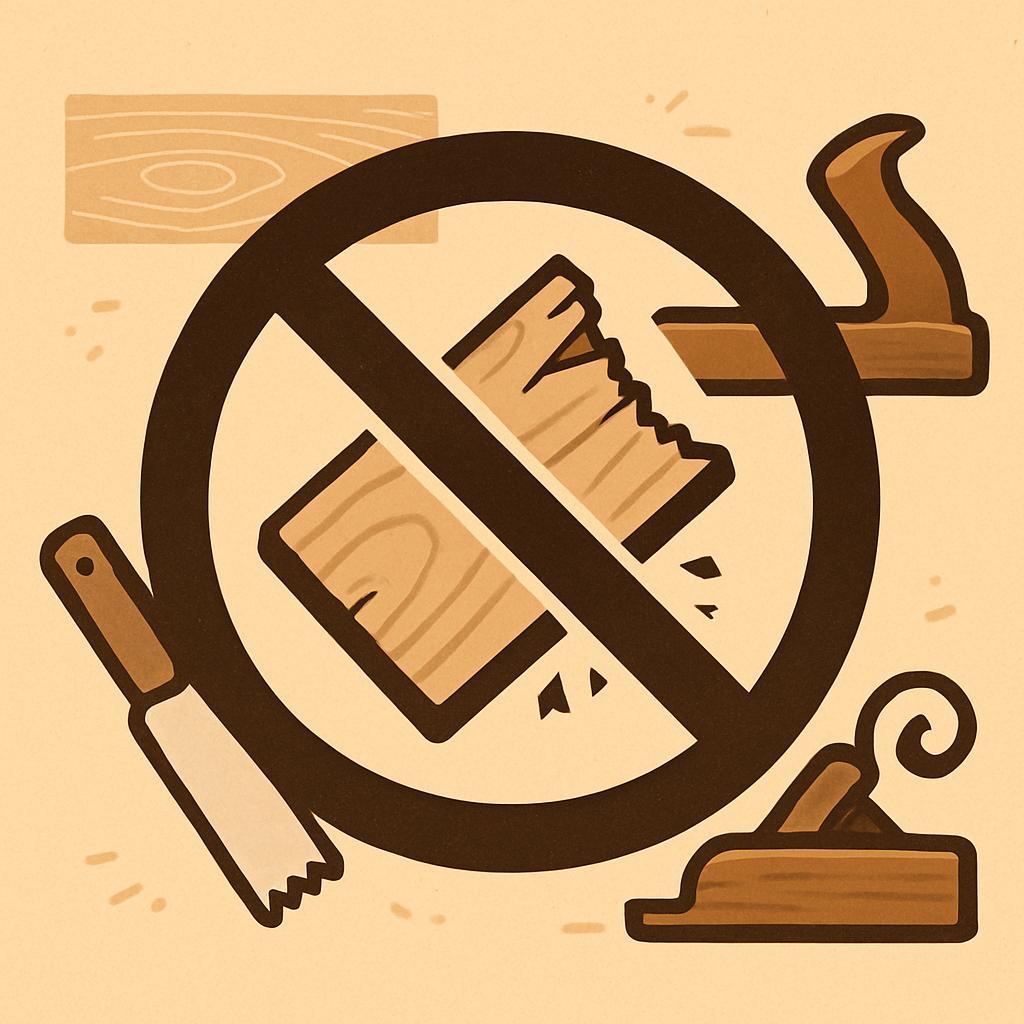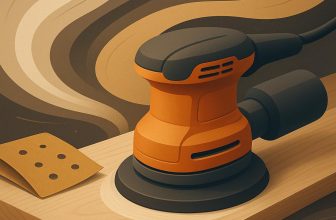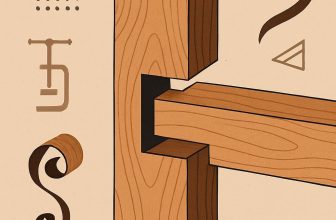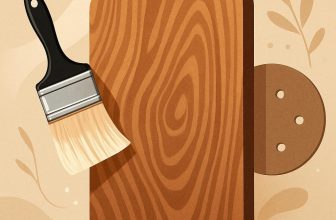
What if the biggest mistake in your workshop never happened-as you saw it coming? Preventing Common Woodworking Mistakes Before They Happen offers a forward-thinking approach to quality craft. For enthusiasts and hobbyists alike,the cost of miscuts,waste,and safety near-misses adds up in time and frustration. This article shows why preemptive planning matters as much as sharp blades and precise measurements. You'll learn how to spot red flags in plans, set up tools for accuracy, and build habits that keep projects on track-from cut list to final finish. Readers gain actionable checks to save material, time, and confidence.
Root causes of common woodworking mistakes and how to prevent them before they happen
Root causes of common mistakes often begin with planning and measurement errors. Rushing through layout, misreading plans, or mis-marking cut lines can set you up for parts that don't fit. Build a simple verification ritual: measure each piece twice, mark the grain and faces clearly, and compare pieces against the final assembly before you touch a blade.When you confirm, you reduce the chance of silent misfits turning into expensive rework.
Tool setup and technique are the next gatekeepers.A dull blade, wrong tooth count, or a misaligned fence can drift a cut off course faster than you think. Take a moment to set blade height and alignment, square the fence, and choose the right blade for the task. Run a test cut on scrap stock to dial in feed rate, than use push sticks and clamps to keep hands away and the work solid.
Material and habitat quietly influence outcomes. Wood with hidden moisture,knots,or warp behaves unpredictably,so acclimate stock to your shop,check moisture content,and orient grain for strength and tear-out resistance.A simple reference helps you act fast:
| Issue | Prevention |
| Warped or cupped stock | Acclimate, flatten if needed, verify straightness before cutting |
| High moisture or drying stress | Allow to reach shop moisture; check with a moisture meter |
| Knot-heavy or unpredictable grain | Plan around knots; orient stock to reduce tear-out |
| Tear-out on end grain | Use sharp blade, light passes, and backer board |
avoid fatigue-driven slips by building a solid workflow and safety habit. A pre-cut routine that includes a rapid checklist, reliable clamps, and a distraction-free workspace pays off in accuracy and injury prevention. Keep your most-used gauges within reach, secure your stock with dependable fixtures, and run a dry-fit assembly before final milling or joinery. Finishing a session with these checks makes each next project more predictable and enjoyable.
Build Your Dream Workshop on a Budget →
precision measurement practices to prevent woodworking mistakes before they happen
Precision begins before a pencil touches stock. Start by translating every plan dimension into a verified measurement you can trust on the shop floor. Embrace the rule: measure twice, cut once. Before making a cut, confirm thickness, width, and length against the cut list, then cross-check with a secondary tool to catch stock variation, saw kerf, or unit misinterpretation.
Develop a measurement routine that makes accuracy a habit,not a happy accident: establish a flat reference face,verify squareness with a combination square,and align your stop block for repeatable cuts.When transferring dimensions, use a marking gauge or a calibrated ruler rather than freehand marks. Always zero your tools on a known reference and re-check after any adjustment.
- Verify stock against the plan with a reliable secondary source (caliper or rule).
- Lock in cut lengths with a stop block and test on scrap before committing to the final piece.
- Account for saw kerf in final dimensions; often it's easier to adjust on the first part than later.
- Calibrate tools at the start of your session and after changes in stock or blade condition.
| Tool | Use | Tip |
|---|---|---|
| Combination square | Verify squareness and layout lines | Read near the reference face for accuracy |
| calipers | Measure thickness and small lengths | zero on a known block before use |
| Marking gauge | Transfer precise lines along the grain | Lock wheel; avoid wheel drift |
| Stop block | Repeatable cut lengths | Clamp firmly and verify against scrap |
cultivate a practical checklist that travels with every project: note stock tolerances, compare cut lengths to plan after roughing, and record any deviations that require adjustments in future work. A tidy bench, good lighting, and a simple measurement log help prevent drift and keep projects on target from start to finish.
Build Your Dream Workshop on a Budget →
Smart tool and material choices to prevent woodworking mistakes before they happen
Smart tool choices start before you touch a board. Pick tools that feel solid, stay reliable, and keep your cuts true. Prioritize sharp blades,quality bits,and precision measuring tools like a dependable combination square and marking gauge. Before you cut, verify that fences and guides are aligned and free of play. A quick pre-check-blade clean, fence locked, and a dry run-can save you wasted stock and misaligned joints.
Smart material choices reduce surprises the moment you begin. Favor stock with predictable behavior: straight grain,flat faces,and minimal warp. For sheet goods, select higher-grade plywood with a solid veneer core and few voids. If you can, acclimate lumber to your shop environment for a day or two. To help you compare options at a glance, consider the following guide.
| Material | Common Challenge | Smart Approach |
|---|---|---|
| Pine and other softwoods | Knotting and uneven grain can cause tear-out | Sharpen blades, use backer boards, and take shallow passes |
| Plywood with voids | Voids can cause blown cuts or tear-out | Inspect cores; choose higher-grade plywood |
| Hardwoods with dense grain | Chipping on end grain | Relief cuts, sharp blades, slower feed |
Once you've chosen the tools and stock, follow a thoughtful workflow to catch mistakes before they become mistakes you can't fix. The steps below help keep projects on track.
- Always measure twice and mark clearly with a sharp pencil or marking knife.
- Secure the workpiece with clamps and use push blocks or featherboards for controlled cuts.
- Make relief cuts at corners and use backer boards to minimize tear-out on faces.
- Do a dry run on scrap stock to test settings and feed rate before committing to the final piece.
Finish with mindful maintenance and safety habits to prevent mistakes day after day. A small routine now pays off with fewer re-cuts and cleaner joints.
- Keep blades and bits sharp; wipe away resin and dust to maintain accuracy.
- Periodically check fence alignment, blade height, and table flatness.
- Store tools properly and label common sizes to avoid picking the wrong bit in a hurry.
- Develop a quick pre-cut checklist to ensure clamps, push blocks, and backer boards are in place.
Build Your Dream Workshop on a Budget →
Workspace setup and safety routines to prevent woodworking mistakes before they happen
Set up your workspace with clearly defined zones: marking and cutting, assembly, and finishing. A logical flow reduces backtracking and misreads. Keep the most-used tools within arm's reach, and store the rest on shelves at eye level to minimize reaching and losing focus. Good lighting is non-negotiable; supplement ambient light with task lighting that eliminates shadows on the cut line. Before you begin any operation, run through a quick safety ritual: inspect PPE, ensure guards are in place, and disconnect power when you change a blade, adjust a fence, or swap a bit. A visible, simple pre-work checklist helps you avoid skipping steps.
Maintain your equipment like you would your eyesight: sharp blades, clean bits, and properly adjusted guards. Always verify that the blade is appropriate for the material, that the riving knife is aligned, and that clamps secure the workpiece. Use push sticks or featherboards for narrow stock and never ride the stock with your hands. Keep the floor free of sawdust and offcuts to prevent slips. If something feels off, pause and verify measurements; a misread distance or an off-square reference is easier to catch at the start than after the cut.
Plan the cut sequence in advance and measure twice, cut once. Mark your stock clearly, verify grain direction, and confirm the stock's thickness and straightness before you begin. Confirm that the stock is supported along its length and that the dust collector and shop vac are running to keep the surface visible. Build a short, visible checklist for the day and keep it near your workstation. Use a scrap piece to test a cut before you launch into the real work. daily safety checks at a glance:
| Area | Check | Frequency |
|---|---|---|
| Workbench surface | Clear debris,clamps ready | Daily |
| Tools & guards | blades sharp,guards in place | Before each session |
| Dust & ventilation | Dust collector running; filters clean | Daily |
| Electrical cords | No frays; outlets safe | Weekly |
By concentrating on space,equipment,and plan,you create a workflow that minimizes mistakes before they happen. Additionally, invest in safety culture and ergonomics: keep cords tidy, store blades safely, and wear appropriate PPE. When in doubt, slow down and re-check; a deliberate rhythm beats rushing into trouble every time.
Build Your Dream Workshop on a Budget →
A practical process checklist for accurate cuts joinery and finishes to prevent woodworking mistakes before they happen
Executing accurate cuts, precise joinery, and flawless finishes starts with a practical process checklist that prevents mistakes before they happen. Begin with a precise plan for each cut, confirming grain direction and stock dimensions before you touch the blade. Set up your tools with care: align fences, set blade height, zero your ruler, and choose the correct bit or saw. Do a quick dry-run on scrap to catch drift,blade chatter,or fit issues long before the real piece goes to the bench.
With measurements in hand, follow a disciplined sequence: measure accurately, mark clearly, and use reliable reference edges. Check for warps or twists in the stock, account for blade kerf, and reserve extra material for final fits. When possible, perform a test cut on scrap to validate line accuracy and assembly clearances, then adjust before you commit to the real work.
| Stage | Key Action | Common Pitfalls |
|---|---|---|
| Setup | Zero references, align fence, set blade height | Drift, misalignment |
| Joinery | Dry-fit, check clearances, clamp securely | Gaps, binding |
| Finishing | Sand in progression, test finish on scrap | Uneven sheen, blotching |
During dry-fitting, focus on tolerance and alignment: dry-fit pieces first; check shoulder lines, end grain orientation, and clamp pressure. For finishes, prepare the surface in stages: sanding progression from rough to smooth, edge care to avoid torn grain, and a test finish on a scrap sample to gauge color and protection. Treat assembly and finishing as complementary checks to minimize surprises at the final stage.
implement a quick post-work routine: double-check dimensions, label components, and record tool settings and cut references for future builds. Keep blades sharp, store stock properly, and maintain a clean, organized workspace. A brief bench review before starting-check dimensions, grain orientation, fit, and finish plan-can save hours and prevent mistakes before they happen.
Build Your Dream Workshop on a Budget →
Practice review and continuous improvement to prevent woodworking mistakes before they happen
Practice review and continuous improvement in woodworking starts before the first cut. By reviewing each session,you can spot recurring mistakes and intervene early. Create a lightweight practice review routine: note what almost went wrong, how you could avert it next time, and what small setup changes would reduce risk. Over time,this becomes a practical safety net that keeps projects on track and confidence high.
Adopt a pre-work ritual that grounds every session in clarity. Use a simple PDCA cycle: Plan your cut list and tooling, do the setup with measured checks, Check your layout against the plan, Act by documenting adjustments for the next run. This deliberate cadence helps you catch misread marks, misaligned fences, or dull tools before they ruin a board. Emphasize double-checks and incremental testing for high-stakes operations like miters, dadoes, and mortises.
To make this sustainable, build a practical checklist you can reuse across sessions. A short, consistent ritual reduces the chance of skipping a critical step and makes near-misses easier to learn from.
- Inspect blades, bits, and router bits for dullness or damage
- Verify stock is dimensioned and squared before starting
- Confirm clamps and benches are secure and stable
- Check the dust collection and shop lighting for visibility
| Category | What to verify | Example |
|---|---|---|
| Setup | Accurate measurements, marked lines, zero reference | Test cut on scrap to confirm alignment |
| Workholding | Stability, safety stops, tension | fence locked, clamps calibrated |
| Tools | Sharpness, correct bit size, torque | Blade depth gauge set to planned dimension |
| Environment | Lighting, dust, space | Clear floor, luminous task lighting |
turn practice into a learning loop. Keep a concise log of near-misses, prosperous mitigations, and the small changes that made a difference. Share notes with a buddy or a forum, and revisit the log weekly to refine your procedures. By treating practice as an evolving protocol rather than a one-off effort, you prevent repeated mistakes and build a steadier, more enjoyable workflow.
Build Your Dream Workshop on a Budget →
Q&A
what are the most common beginner mistakes in woodworking, and how can I prevent them?
Plan your project and write a simple cut list before you touch the wood.Measure twice, mark clearly, and verify the layout on scrap stock. Do a dry run of your cuts on scrap wood to catch mistakes before the real piece is cut.
How can I ensure precise measurements and layout before cutting?
Use a sharp marking knife or pencil,a solid square,and a straightedge for layout.Double-check each dimension from multiple references and confirm critical angles with a protractor or calipers if needed. Clamp the work firmly and dry-fit parts on the bench before making any cuts.
What steps help prevent tool and blade accidents?
Keep blades sharp and properly aligned, and use guards or riving knives where available. Unplug tools before changing blades or bits, and use push sticks or featherboards to keep your hands away from the blade.Secure the work and maintain a clean, distraction-free workspace.
how do I minimize tear-out and achieve a cleaner finish?
Choose the right blade for the grain direction and consider a backer board or masking tape to reduce tear-out. Keep blades sharp and feed the wood smoothly with steady pressure. Sand progressively from coarse to fine grits and apply a light finish after glue-ups to keep the surface even.
Concluding Remarks
ultimately, the biggest safeguard is a simple mindset: prepare, verify, and proceed with intention. The core takeaway is that most woodwork missteps can be prevented by slowing down at decisive moments-measure twice, plan your joints, test-fit parts, and respect your tools. When you anticipate pitfalls, you protect material, time, and pride, and you unlock cleaner lines and safer work.This matters because every project reflects your patience as much as your skill, and enthusiastic woodworkers deserve that quiet confidence. Start small if you're unsure-try a beginner project, dive into another guide, or apply these habits to your next build. Stay curious, stay precise, and enjoy the craft.







Great advice! It’s always better to plan ahead and avoid those frustrating blunders that can derail a project. Thanks for sharing these tips!
Absolutely, preventative measures are key! I wish I had learned some of these tips earlier in my woodworking journey – they would have saved me a lot of time and materials!
These tips are invaluable! I’ve definitely made my fair share of mistakes, and it’s refreshing to see such practical advice that can help others steer clear of the same pitfalls. Planning and preparation truly make all the difference!
I couldn’t agree more! Taking the time to plan and being mindful of common mistakes really sets you up for success in woodworking. It’s all about learning from experience and sharing that knowledge with others!
I love this discussion! A proactive approach can really transform your woodworking projects; it’s so much more satisfying to create without the stress of avoidable mistakes. These insights are a treasure for both beginners and seasoned woodworkers alike!
I’m so glad to see this topic being discussed! It’s amazing how a little foresight and attention to detail can elevate our craft and keep the joy in woodworking. Every tip shared here is a step toward building confidence in our skills and achieving stunning results!
I completely resonate with all of you! It’s incredible how a little preparation and understanding of common errors can save us so much frustration down the line. I always find that the more I learn about what to watch out for, the more enjoyable my projects become. Let’s keep sharing our experiences and tips!
Absolutely! It’s fascinating how understanding the fundamentals can completely change your approach to woodworking. Having a proactive mindset and being aware of potential mistakes not only enhances the quality of our work but also fuels our passion for the craft. Keep the tips coming, everyone!
This conversation is so inspiring! Emphasizing prevention in woodworking not only boosts our confidence but also fosters a supportive community where we learn from each other’s experiences. Every shared tip is a step towards mastering this craft, and I can’t wait to implement these insights in my next project!
I’m thrilled to see such enthusiasm around this topic! It’s true that by focusing on prevention, we can not only enhance our skills but also ensure a smoother and more rewarding woodworking experience. I’m eager to incorporate these preventive strategies into my work and share what I discover. Let’s keep the momentum going!
I couldn’t agree more with everyone’s sentiments! It’s empowering to think that by being proactive and learning from past mistakes, we can truly refine our techniques and create pieces we’re proud of. Let’s continue to support one another and share our insights-collectively, we can elevate our woodworking skills to new heights!
I love how this discussion highlights the importance of learning from each other! By sharing our knowledge on preventing mistakes, we not only improve our own woodworking skills but also build a stronger community. Let’s continue to inspire and uplift one another on this creative journey!
I completely resonate with all the positive energy here! Preventing mistakes is such a game-changer in woodworking, and it’s amazing to see how sharing our experiences can lead to collective growth. I’m excited to embrace these strategies and see how they transform my projects-let’s keep exchanging ideas and lifting each other up!
I’m so glad to see this positive energy surrounding the idea of prevention in woodworking! By actively sharing our experiences and strategies, we not only avoid common pitfalls but also inspire creativity and growth within our community. Let’s keep the momentum going and make our woodworking journeys even more rewarding together!
I absolutely love the spirit of collaboration in these comments! It’s so true that sharing our knowledge helps us all navigate the challenges of woodworking more effectively. I can’t wait to apply these preventive strategies to my own projects, and I’m looking forward to learning from everyone’s experiences-together, we can elevate our craft and avoid common pitfalls!
This exchange is fantastic! It’s clear that by communicating our experiences and preventive measures, we can minimize errors and elevate each other’s craftsmanship. I’m excited to implement these insights into my own work and see how we can all grow together in our woodworking journeys!
I’m thrilled to see everyone so engaged in this conversation about prevention! It really emphasizes how sharing our woodworking journeys can lead to incredible growth and skill enhancement. Together, we can create a supportive environment where we learn from each other’s mistakes and triumphs. Let’s keep pouring our insights into each other’s projects and continue fostering this wonderful community spirit!
I’m truly inspired by the collective enthusiasm in this discussion! It’s clear that as we share our experiences and best practices, we not only enhance our own skills but also empower each other to tackle woodworking challenges with confidence. Let’s keep this wonderful exchange of knowledge flowing; it will undoubtedly lead to even greater craftsmanship for all of us!
I love how this discussion highlights the importance of preventive measures in woodworking! By sharing our insights and learning from each other’s experiences, we can all streamline our processes and avoid those frustrating mistakes that can derail our projects. Let’s continue this journey of collaboration and support, as it’s amazing to see how much we can improve together!
I’m so glad to see this vibrant discussion on preventing mistakes in woodworking! It’s amazing how openly sharing our past challenges and solutions can create a wealth of knowledge for all of us. By learning from each other’s experiences, we’re not just improving our skills but also building a strong community that thrives on support and mutual growth. Let’s keep inspiring one another to create beautiful projects without the common setbacks!